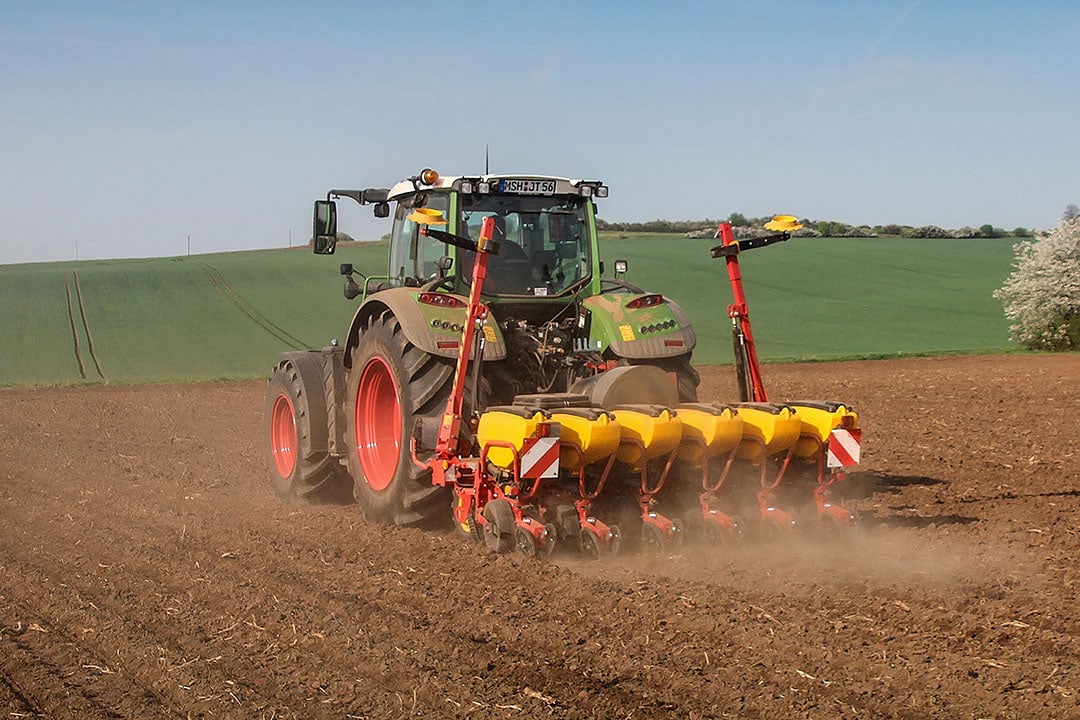Precision planting leads to better results in winter crops

Precision planting in Australia improved the uniformity of winter crop stands and allowed reductions in plant density without loss of yield, according to a project of the Grains Research and Development Corporation (GRDC).
The project, managed by the University of Adelaide, looked at the ideal seed distribution and placement in winter crops for maximum yield and profit, using precision planters. These specialised seeders – that use high-tech disc row units and are fitted with singulation devices – can plant one seed at a time with accurate spacing.
Seed sown at a consistent depth and spacing can help to establish an uniform crop and also minimises inter-plant competition. Precision planting is widely applied in Australia with summer crops such as maize, cotton and sorghum, with wide row spacings. But the project wanted to find out if the same precision and benefits can occur in winter crops such as canola, pulses and cereals grown at narrower row spacings.
Potential benefits of precision planting
Although yield gains from precision planting have been variable, potential benefits will be greatest in crops with high seed input costs, a major benefit when it comes to expensive hybrid seeds. The GRDC advises growers to consider the most cost-effective way in which to transition to more precise sowing equipment.
Precision planting technology is currently gaining interest in the southern and western regions of Australia. Many growers aim to reduce the cost of hybrid canola seed, but also want to maximise their productivity in other winter crops. There is particular interest in seed singulation technology, the ability to precisely locate a single seed in the seeding row.
GRDC invested in a multi-pronged project, to survey crops in the southern and western regions of Australia to assess variation in seedling emergence and seedling depth and to examine what factors contribute to this variation.
Precision planting trials
The team also undertook a series of small-scale and large-scale trials, comparing conventional sowing – either a cone seeder or an airseeder – with precision planting, and carried out a qualitative survey of users of precision planters for winter grain crops.
The survey highlighted the variation in crop establishment that occurs within a paddock and between paddocks. Crop establishment in canola and lentil crops was found to be variable. Improvements were foreseen in many cases which could improve establishment and reduce seed costs. Establishment was lower and more sensitive to sowing conditions in canola than in lentils and provided greater scope for improvement.
Attention to detail in setting up the seeder
A consistent feature among growers who achieved good rates of crop establishment, was their attention to detail in setting up the seeder, making adjustments according to sowing conditions and monitoring performance during seeding. The age and make of a seeder proved to be less important than knowing a seeder and the factors that affect establishment, such as seeder set-up, calibration, sowing speed and depth
The establishment of canola and lentils is influenced by different factors, the researchers found. While some factors are outside grower control, there are simple changes that could maximise establishment. During the project, the establishment in canola was lower with early – April to early May – sowing. During the survey, many crops were being dry-sown or had low soil moisture because of a dry autumn. Establishment in lentils, however, was not affected by time of sowing.
Establishment was greater with hybrid canola varieties than with open-pollinated varieties and also tended to be better when seed and fertiliser were separated during seeding. Seedling emergence was assisted by maintaining good surface structure to minimise crusting. This can be achieved, the researchers say, through stubble retention or management of sodicity.
Text continues below image

Crop establishment in pulses generally higher
During the project a series of small plot trials with precision planting were conducted in South Australia and Victoria, using a purpose-built six-row seeder that could sow seeds as a conventional cone seeder or as a precision planter. Another trial in Western-Australia used a small plot seeder, with the capacity for singulation as well as conventional sowing.
Both plot seeders used disc seeding systems, except for one year, when cone seeding could only be done with a tyned seeding system. Large-scale trials were also conducted with canola and faba beans near Skipton in western Victoria, using a Väderstad airseeder (Seed Hawk model and Rapid model) and a Väderstad precision planter (Tempo model). Each trial compared the responses to row spacing (25 centimetres versus 50cm) and sowing rate (recommended versus half-recommended) and were sown in plots 150 metres long.
In most of the plot trials there was no significant difference in the yields between the two seeders. But significant differences were measured in two of the nine trials; in both cases precision planting improved yields.
Crop establishment in the pulses was generally higher than in canola. But for both plant species there was no consistent effect of precision planting on establishment. Crop uniformity, however, was improved substantially with precision planting.
Differences in yield
The results for canola and pulses indicated that despite variable effects on establishment, precision planting resulted in yields equivalent to or higher than those achieved with conventional sowing and sometimes at lower plant populations.
When there were differences in yield, precision planting improved grain yield by 18%, faba bean yield by 22%, lupin yield by 10% and lentil yield by 14%. In a number of cases, precision planting achieved equivalent yields to conventional planting but with a lower plant population.
The potential economic benefit is the saving on seed costs from producing the same yield with fewer plants per square metre. However, the responses to precision planting varied among experiments and the factors influencing the yield benefits from precision planting are still unclear.
Precise and smart seeding technology is evolving rapidly, with airseeder-based transitional options becoming available that could allow a more practical and cost-effective pathway to greater planting precision, the researchers say.



